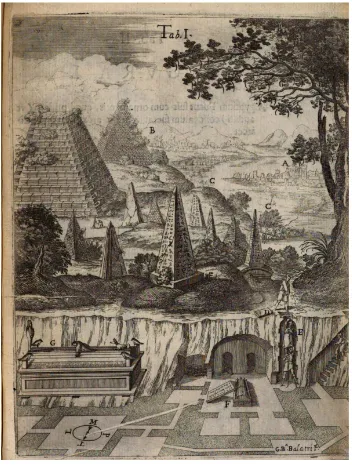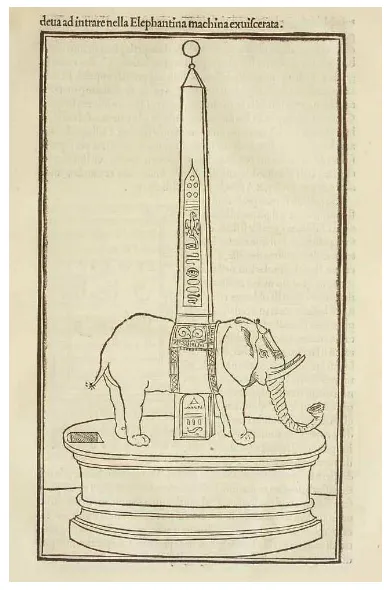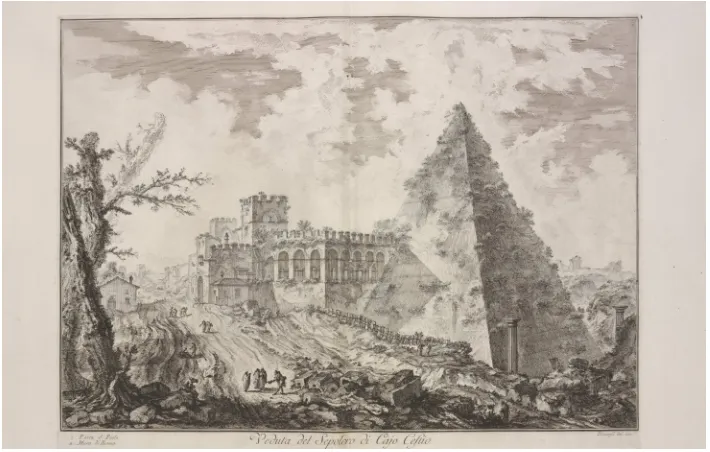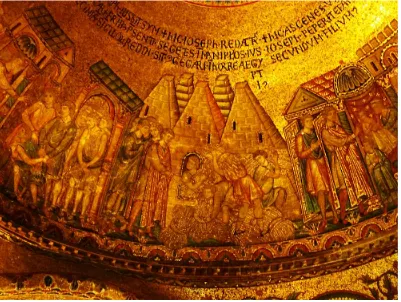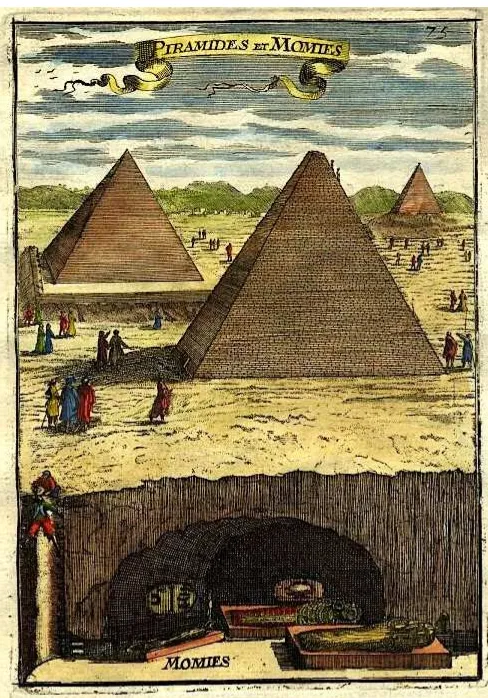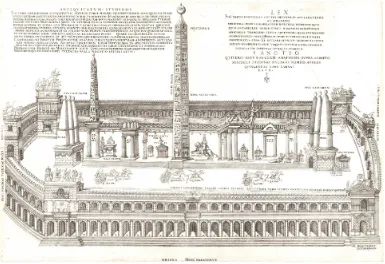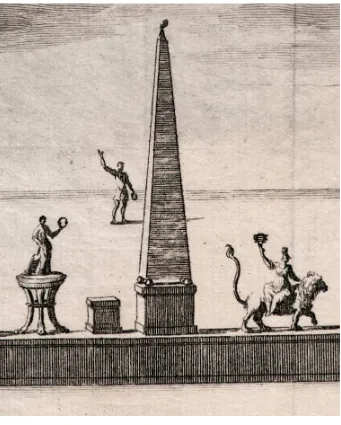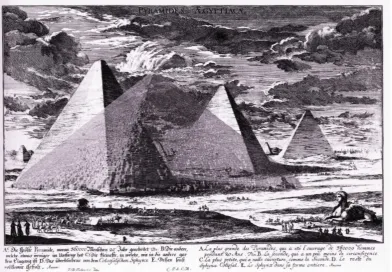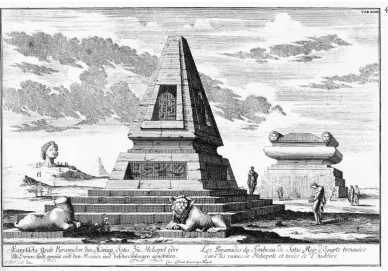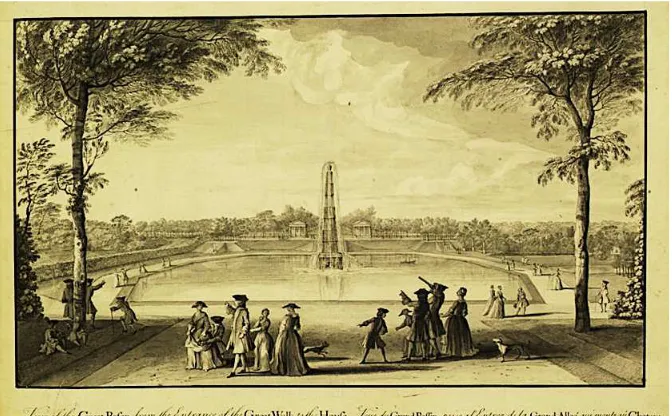Proceedings of the Third Birmingham Egyptology Symposium, University of Birmingham, i Proceedings of the Third Birmingham Egyptology Symposium, University of Birmingham, 19th February 2016
Steven R. W. Gregory, Editor – published 24th November, 2016
The third Birmingham Egyptology Symposium addressed the theme: ‘Ancient Egypt: Looking Out and Looking In’, a topic which attracted speakers from both the UK and abroad and, most importantly, a similarly diverse audience who gave enthusiastic support to the occasion.
Birmingham Egyptology takes this opportunity to thank all those who attended the event, with particular thanks to the organizing committee, chaired by Stephanie Boonstra, and all members who helped in whatever way to bring about what once again proved to be a most successful event. We are also grateful for the continuing support of the University of Birmingham, in which respect we would especially like to thank the staff of the Department of Classics, Ancient History, and Archaeology, and Dr Henry Chapman for the use of the excellent facilities at the European Research Institute.
We were also fortunate to have the continued support of University fellows and lecturers. The Symposium began with a presentation by Dr David Gange entitled, ‘A Great Reception? The Past & Future of the History of Egyptology’; a fascinating presentation which ideally set the tone for the papers which followed. [Ed.]
Contents of this volume
Pyramisks and Obelids – Pitch Imperfect? The reception of ancient Egyptian architectural elements in pre-nineteenth century Europe
Chris Elliot, Independent Scholar 1
‘The blundered name of Khufu’: Ancient identity and modern identification
Proceedings of the Third Birmingham Egyptology Symposium, University of Birmingham, ii Other papers presented at the event and not published in these proceedings:
(Trying to look in on) Titles in Ancient Egyptian Administration
Jessica Tomkins, Brown University
Inside Out: Practical and Mythical Ways of Marking the Boundaries of Egypt
Valeria Turriziani, Sapienza Università di Roma
Looking Out the Boundaries of the Cosmos: Developments in the Conception of Chaos from the Predynastic to the Early Dynastic
Emanuele Prezioso, Independent Researcher
The Mummy at the Séance
Eleanor Dobson, University of Birmingham
The Relations between the Apiru and the Egyptian Domination of the Southern Levant during the Late Bronze Age
Francesco De Magistris, University of Oxford
The Perceptions of Egypt in the Early Iron Age and Their Impact on Interpretations of the Late Third Intermediate Period
Edward Mushett Cole, University of Birmingham
Grand designs: Breathing New Life into Old Decorative Traditions in the 25th Dynasty
Katherine Piper, University of Birmingham
Ancient and Modern Mining Landscapes in the Eastern Desert of Egypt: A View from the Endangered Archaeology of the Middle East and North Africa Project
Nichole Sheldrick, University of Oxford
The Beholding Eye: Perceptions of Place in Ancient Egypt
Carl Graves, University of Birmingham
The following research posters were also presented:
Ancient Egypt Seen Through the Silver Screen: A Look at Cinematic Presentations of Ancient Egypt
Alice Baddeley, University of Birmingham
Flavour Invasion: Egyptian Cuisine during the Roman Period
Courtney Bobik, King’s College London
The Reception of Egyptian Culture by the Achaemenid Empire: Case of the Palatial System
Sepideh Qaheri-Paquette, Université Lyon 2
Links to Ancient Egypt at Westminster Abbey
Proceedings of the Third Birmingham Egyptology Symposium, University of Birmingham, 1 Pyramisks and Obelids – Pitch Imperfect?
The reception of ancient Egyptian architectural elements in pre-nineteenth century Europe
By Chris Elliott
Abstract
Pyramids and obelisks are now considered to be distinct architectural forms, based on ancient Egyptian originals. From the sixteenth to the late eighteenth century AD,
however, pyramids were consistently illustrated and built in Europe with far more steeply pitched or sloping sides than genuine Egyptian examples, and obelisks shown with exaggerated tapers and no pyramidion. Because travel to Egypt during this period was relatively uncommon, the pyramidal tomb in Rome of Caius Cestius has been assumed to have acted as a model for these pyramids. This, however, does not explain the unusual forms of obelisks in illustrations, as the Vatican obelisk, and others when re-erected, provided authentic models for the proportions and shape of obelisks, and other contemporary illustrations show obelisks with the correct Egyptian form. This article suggests that a more plausible explanation for the hybrid ‘pyramisk’ or ‘obelid’ forms shown in illustrations lies in a description of them by Ammianus Marcellinus, and the use of the Italian term ‘guglio’ and the English ‘pyramid’ to describe both pyramids and obelisks.
Key words: ancient Egypt, pyramid, obelisk, guglio, Europe, reception, representation, architecture.
The pyramid is an architectural form particularly associated with ancient Egypt, as is the obelisk, and in modern European and American cultures they are considered to be separate entities.1 A pyramid can be defined as having a square base and triangular sides tapering evenly to a point, and an obelisk as similarly having a square section, but much more extended rectangular sides with a very gradual taper inwards and a sharp change in shape and slope at their upper ends to form a pyramid or pyramidion. Between the sixteenth and late eighteenth centuries AD, however, illustrations in texts
repeatedly show structures somewhere between true pyramids and obelisks, but not corresponding to what would nowadays be considered to be the canonical form of either ancient Egyptian pyramids or obelisks, and which can be dubbed ‘pyramisks’ or ‘obelids’.
Take for example Figure 1, which shows an illustration from Giovanni Nardi’s 1647 edition of the De Rerum Natura of Lucretius (Titus Lucretius Carus), which included Nardi’s commentary and an excursus on Egyptian funerary practices.2 Despite the vegetation, including a large tree, dotting the European-style landscape, a key to the labels in the illustration on the facing page identifies it as showing an Egyptian cemetery, the river as the Nile, the city as Cairo, and the ruins in the far background as the remains of Memphis.3 In the middle ground, although only two
1 See for example Arnold 2003: 165-166 and 183-185.
2
Nardi 1647: 243.
3 Nardi actually confuses ‘Alcyrus’, i.e. Cairo, with Memphis, and labels Memphis as ‘Babylon’,
Proceedings of the Third Birmingham Egyptology Symposium, University of Birmingham, 2
large pyramids are shown, rather than three, their scale suggests they are the pyramids at Giza, with the flat-topped one in front representing the Great Pyramid. In the foreground, figures can be seen entering a tomb by way of a shaft and a staircase. In the tomb itself, there is an inscribed stone sarcophagus with a wooden coffin, and in alcoves at the back bandaged mummies can just be made out. Giza was less well known for its tombs than the ‘mummy pits’ of Saqqara, so the view is probably a composite showing both areas, and the tomb an illustration of elements from several different tombs rather than a single one.
The eleven structures in the landscape are of varying sizes, but are all steeply sloping or pitched. Several of them, including the largest two at the back, are clearly built from blocks of masonry, and as previously suggested, can be identified as
Proceedings of the Third Birmingham Egyptology Symposium, University of Birmingham, 3
pyramids. Three, however, are smooth sided, and clearly decorated on their faces with stylised hieroglyphs, which is typical of obelisks but unknown with pyramids (although their original limestone casings may have had inscriptions). They must, therefore, be intended to represent obelisks, even though the nearest to Giza or Saqqara would have been at Heliopolis. In addition, two of the smooth sided structures, one inscribed and one uninscribed, stand on plinth- or pedestal-like bases, and a third inscribed one stands on a segmental arched base. Again, the square base features suggest obelisks rather than pyramids, although it is unclear what the segmental base is intended to represent.
The image, engraved by the Florentine sculptor and architect Giambattista Balatri (1627-1669), is almost certainly based on descriptions by Tito Burattini, who travelled to Egypt and stayed there between 1637 and 1641. He did not publish an account of his travels, but corresponded with Athanasius Kircher, who quoted his letters extensively in Oedipus Aegyptiacus (1652-4), in the section ‘De Mumijs...’, and later republished them in Sphinx Mystagoga (1676). Burattini describes descending via a ‘pozzo quadrato’ (square shaft) with footholes in it into a tomb with rock-cut chambers in which were coffins in ‘focolari’ (literally fireplaces or hearths) with an ‘idolo’ at their head and a bird at their foot. Initially, Kircher illustrated this account with an engraving made from Burattini’s own sketch of the interior of such a tomb, but the fact that he later replaced this with a copy by Coenraad Decker of Balatri’s engraving suggests that the scene was based on Burattini’s description.4 Another version of the image, acknowledging Nardi’s work as its source, appeared in Thomas Greenhill’s 1705 work on embalming, Nekrokedeia.5
Balatri’s engraving is clearly a sophisticated image. Its foreshortened perspective shows Memphis, Cairo, and Giza/Saqqara, and the section showing the tomb in the foreground incorporates a cross-section, a plan indicating the layout of its rooms with a compass indicating the cardinal directions, and superimposed on the left of the section an enlargement of the wooden coffin inside the stone sarcophagus. It incorporates elements from a number of separate locations into a single scene, and it could be argued that what are, for us, archaeologically inaccurate representations of both pyramids and obelisks are a result of the way in which the artist combines and distorts them in order to display them within this perspective, and in a portrait, rather than landscape format. The shrubs and trees dotted across the landscape, and shown growing in cracks in the structures, also indicate that the artist is unfamiliar with the Egyptian landscape, and has depicted it with generic European scenery. These are plausible explanations for the way in which pyramids and obelisks are shown in this particular image, but we need to consider how common such representations are, and if they can also be explained in a similar way.
Similar images do exist, and had existed for a long time previously. The end of the fifteenth century saw the introduction of printed books with illustrations. One of the most celebrated of these early illustrated works was the Hypnerotomachia Poliphili, usually attributed to Francesco Colonna, and published in Venice by Aldus Manutius in 1499. An illustration in it shows a building with a classically influenced portico and pediment flanked by columns, but with an upper part resembling a steeply pitched and stepped pyramid topped by a rectangular or cubic plinth on which stands
4 See Whitehouse 1992, and for Kircher’s image see
http://diglib.hab.de/drucke/15-9-quod-2f/start.htm?image=00010. 5
Proceedings of the Third Birmingham Egyptology Symposium, University of Birmingham, 4
an obelisk-like structure on four foliate supports, the obelisk topped with a winged figure holding what looks like a severed animal tail. The pitch and stepping of the pyramid are not typically Egyptian, and the obelisk has a single rather than double taper from base to point (Figure 2). It can be argued that this is an architectural fantasy, a capriccio, and not intended to represent ancient Egyptian forms, but another illustration in the book indicates that the artist who created the image was aware of obelisks as a specifically Egyptian form, and could represent them in this way (Figure 3). This illustration, which may have been based on a drawing of the Obelisk of Domitian (now in the Piazza Navona) by Giuliano da Sangallo, was also the inspiration for Bernini’s base for the Piazza della Minerva obelisk in Rome when it was re-erected.6 Elephant aside, it shows a clearly recognisable and correctly proportioned obelisk with double taper, albeit one with inaccurate hieroglyphs.
For artists in the Renaissance and Enlightenment, the most accessible models for pyramids and obelisks were those in Rome, and it is clear from the image in Figure 3 that the unknown artist of the Hypnerotomachia had some familiarity with the obelisks there. The Piazza della Minerva obelisk, which in its current form most closely resembles the illustration shown as Figure 3, was not rediscovered until 1665, but the Piazza Navona obelisk, which also has a single column of hieroglyphs, was
6 Curran 2007: 150-151.
Fig.2: Illustration of a building with Egyptianising features from Hypnerotomachia Poliphili.
Fig.3: Another illustration from Hypnerotomachia Poliphili showing a correctly proportioned obelisk.
Proceedings of the Third Birmingham Egyptology Symposium, University of Birmingham, 5
lying exposed in the ruins of the Circus of Maxentius (also known until the nineteenth century as the Circus of Caracalla) at the beginning of the fifteenth century, where it was seen by the Florentine humanist scholar Poggio Bracciolini.7 The Vatican obelisk, although it is uninscribed, was the only one of Rome’s obelisks to remain standing from ancient times until it was moved to its present site in the late sixteenth century, and provided another example of the form. Models for pyramids were less common, but the pyramidal mausoleum of Gaius Cestius in Rome had survived since ancient times, and avoided the fate of other Roman buildings that were quarried for stone or burnt to provide quicklime by being incorporated into the Aurelian walls fortifying Rome in the third century AD.8 In post-Classical times it was popularly believed to be
the tomb of Remus, one of the mythical founders of Rome (Figure 4). Another pyramidal mausoleum sited between the Mausoleum of Hadrian (now Castel Sant’Angelo) and the Vatican was believed to be the tomb of Romulus. It existed until the early sixteenth century, when it was demolished and the marble facing used for steps at St. Peters.9
As we have seen, the illustration from the Hypnerotomachia shown inFigure 2 can be explained as an architectural fantasy. Similar images of obelisks without hieroglyphic inscriptions can be viewed in the same way, and illustrations showing steeply pitched pyramids can be attributed to the use of the pyramids in Rome as examples. It is clear from the image shown as Figure 3 that artists could accurately depict an obelisk with a hieroglyphic inscription, but even here its combination with the elephant base means it could be seen as another architectural fantasy, and the hieroglyphs regarded as decorative or Hermetic, rather than genuinely Egyptian.
7
Chaney 2011: 157-158. 8 Aldrete 2004: 41-42.
9 Claridge 1998: 59, 364-366.
Proceedings of the Third Birmingham Egyptology Symposium, University of Birmingham, 6
Therefore, we need to focus on whether pyramids and obelisks were represented as Egyptian objects, and how far they were understood in this way.
Apart from a general awareness of Egypt through its role in the Old and New Testaments of the Bible, we know that Egyptian architectural forms were known in Europe during mediaeval times. Accounts by pilgrims travelling to the Holy Land and Jerusalem via Egypt mention both the pyramids of Giza and obelisks in Rome and Egypt at least as far back as the fourteenth century. The Irish Franciscan monk Symon Semeonis, who visited Egypt as part of a pilgrimage to the Holy Land in 1323-1324, compared the sizes of the Vatican obelisk and one of two obelisks at Al-Matariyah, which was probably the obelisk of Senusret I.10 In 1384 three Tuscans called Frescobaldi, Gucci and Sigoli were part of a party of pilgrims, and left accounts of visiting the pyramids of Giza.11 Arnold von Harff, a German pilgrim in 1496-1497, wrote about the pyramids of Romulus and Remus in Rome, Cleopatra’s Needles in Alexandria, and of climbing the Great Pyramid at Giza.12
However, although representations of pyramids as Egyptian structures can be traced back at least as far as the thirteenth century AD, where they are shown as the
Granaries of Joseph in mosaics in the narthex of the Basilica of San Marco in Venice (Figure 5), such representations were rare, and their apparent slope or pitch is affected
10
Esposito 1917: 86. 11Holy Places of Egypt, 51. 12 Letts 1946: 94-95.
Proceedings of the Third Birmingham Egyptology Symposium, University of Birmingham, 7
by the conventions of perspective in Medieval art. Possible representations of obelisks from this period are even less common, and the same artistic conventions often make it difficult to decide whether obelisks or pillars are being shown.13 As has been suggested above, it was not until the introduction of printed books with illustrations towards the end of the fifteenth century AD that representations of pyramids and obelisks started to become more common. The introduction of illustrations into printed books also reflected the development of linear perspective around the middle of the fifteenth century, but, as we have already seen, the engraving by Balatri in Nardi’s work employed a form of combined or forced perspective, and another seventeenth century example, possibly influenced by Balatri, from Alain Manesson Mallet’s Déscription de l’Univers of 1683 suggests that this was an accepted form of representation (Figure 6).
Apart from the accounts of travellers and pilgrims which mentioned and to some extent described pyramids and obelisks in Egypt, the Renaissance saw the circulation of texts from the Classical world which mentioned them, and reinforced awareness of them as specifically Egyptian architectural forms. These included the
Histories of Herodotus, first published in Latin translation in Venice in 1474,14 the
13 For example, in the case of Alexandria, where Pompey’s pillar was a well-known landmark.
14 Glasgow Incunabula Project.
Proceedings of the Third Birmingham Egyptology Symposium, University of Birmingham, 8 Natural History of Pliny the Elder, first published in 1469,15 and Tertullian’s De spectaculis, first published in 1545.16 Perhaps most influential was the Rerum gestarum libri of Ammianus Marcellinus, first published in Rome in 1474.17 All of these had previously been accessible in manuscript form, but their appearance in printed editions and translations increased their circulation and influence. Herodotus was a key source of information on ancient Egypt in general, but Pliny described the transportation of obelisks from Egypt,18 and Tertullian described them as Egyptian objects in the setting of the Circus Maximus in Rome.19 As well as mentioning Egyptian pyramids, which he described as ‘narrowing into a cone’,20 Ammianus Marcellinus described the form of Egyptian obelisks and their re-erection in the Circus Maximus and Campus Martius by Augustus and Constantius, as well as mentioning four other obelisks subsequently brought from Egypt, with their locations in Rome, and giving a translation of the hieroglyphs on the obelisk of Constantius in the Circus Maximus.21 Ammianus wrote:
Now an obelisk is a very hard stone, rising gradually somewhat in the form of a turning-post [such as those in the Circus Maximus] to a lofty height; little by little it grows slenderer, to imitate a sunbeam; it is four-sided, tapers to a narrow point, and is polished by the workman's hand.22
He went on to say that hieroglyphs were ‘cut into it on every side’.23 While this description accurately reflects the material from which obelisks were made, granite, their gradual taper, and that they are pointed, it does not make clear that they taper in two stages, unlike a pyramid.24
The influence of these classical sources can be seen in images of the ancient city and its obelisks, which also drew on excavations and building work that were exposing Roman architectural remains. In 1553 Nicolas Béatrizet (c.1515-1566) engraved for the Speculum Romanae Magnificentiae (The Mirror of Roman Magnificence) plates based on reconstructions of the Circus Maximus and Circus Flaminius by the architect and artist Pirro Ligorio. The Speculum was a series of plates showing the ancient and modern architecture of Rome, which could be bought individually, but also bound into albums as selections. The engraving of the Circus Maximus shows the obelisks re-erected there by Augustus and Constantius (Figure 7). Both are shown with accurate proportions, including clear pyramidions, and with inscriptions recognisable as Egyptian hieroglyphs. This reconstruction, and another of the Circus Flaminius, shown with one large and one much smaller uninscribed obelisks, seem to have been imitated and adapted by other artists and engravers, particularly Jan Luyken, who produced a plate entitled Ludi Circenses, showing chariot racing in a Roman circus, for an edition of Suetonius’s The Twelve Caesars. This in turn was copied by other illustrators, including one version probably from a late seventeenth century Latin edition of Suetonius’s work (Figure 8). As a detail
15
Dannenfeldt 1959: 8.
16 Christian Classics Ethereal Library.
17 Rijksuniversiteit Groningen, Ammianus Marcellinus Online Project.
18
Pliny the Elder, Natural History, 16.76, 36.14-15 and 36.64-74. 19 Tertullian, De spectaculis, 8.
20 Ammianus Marcellinus, Roman History, 22.15, 29. 21 Ammianus Marcellinus, Roman History, 17.4, 1-23. 22
Ammianus Marcellinus, Roman History, 17.4, 7. 23 Ammianus Marcellinus, Roman History, 17.4, 8.
Proceedings of the Third Birmingham Egyptology Symposium, University of Birmingham, 9 Fig. 7: A recreation of the Circus Maximus, showing its obelisks.
Proceedings of the Third Birmingham Egyptology Symposium, University of Birmingham, 10
from it (Figure 9) shows, although the obelisk in the circus has a vestigial pyramidion, its shape and proportions are closer to those of the structures in the engraving by Balatri in Nardi’s work. Therefore, while it is clear that the experiences and accounts of pilgrims and travellers, together with available classical sources, were enough to establish a clear awareness of pyramids and obelisks as Egyptian architectural forms, and obelisks were illustrated which corresponded to surviving examples, including their hieroglyphic inscriptions, at the same time there were other representations of obelisks which omitted or minimised the features that distinguished them from pyramids.
We have already seen how pyramids were represented with pitches far steeper than typical Egyptian ones, even when they were shown in an Egyptian setting, and this continued into the Enlightenment. The eighteenth century saw the publication in 1721 of Johann Bernhard Fischer von Erlach’s Entwürff Einer Historischen Architektur, an early and highly influential comparative study of world architecture,
Proceedings of the Third Birmingham Egyptology Symposium, University of Birmingham, 11
with plates drawn by Von Erlach, and engraved by Johann Adam Delsenbach. Book I includes the Seven Wonders of the Ancient World, including the Pyramids of Egypt. Von Erlach stressed the authenticity of his plates, which he had researched from ancient sources and the accounts of contemporary or near contemporary travellers, and in his description accompanying the plate showing the pyramids of Giza he cited Thévenot,25 Lucas,26 ‘Pere Elzear’, Strabo, Diodorus Siculus, Pliny, and Herodotus as sources. Despite this, the three main pyramids, as well as others shown in the background, all have an exaggerated pitch. Quite how exaggerated can be seen by superimposing a modern photo of the Great Pyramid on Von Erlach’s image (Figure 10). Again, it can be argued that the representation of the pyramids in this way is dictated by the need to fit them into a single image. Another of the plates from the book, though, is described in its caption as showing the pyramids of the tomb of Sotis, King of Egypt, found in the ruins of Heliopolis (Figure 11). Leaving aside the problem of which Pharaoh is being referred to, this image is even further away from the actual form of Egyptian pyramids,27 and once again reflects elements of both pyramids and obelisks. The structure is built from blocks of masonry, like a pyramid, and unlike an Egyptian obelisk, which is monolithic,28 but it also has hieroglyphic reliefs, which is typical of obelisks, but not of pyramids.
25 Jean de Thévenot (1633-1667), French traveller and natural scientist; Bierbrier 2012: 539.
26 Paul Lucas (1664-1737), French antiquary and traveller; Bierbrier 2012: 342.
27 Typical angle of incline around 52 degrees; see Edwards 1961: 269.
28
This does not apply to early obelisk forms, such as that at the Sun Temple of Niuserre at Abu Ghurob, but these have been reconstructed following excavations in the nineteenth and twentieth centuries, outside the period to which this paper relates.
Proceedings of the Third Birmingham Egyptology Symposium, University of Birmingham, 12
Von Erlach’s work was influential among contemporary architects, who tended to use it as a pattern book, and we know that copies of it were in the libraries of Nicholas Hawksmoor and James Gibbs.29 The influence of Von Erlach’s work, and specifically the plate shown as Figure 11, can be seen in Gibbs’s original design for the Boycott Pavilions at Stowe,
and for the Turner Mausoleum at St. Cuthbert’s Church, Kirkleatham. The eighteenth century saw the rise of the informal style of landscape gardening which came to be known as the English Garden style, and Gibbs was among a number of architects who designed buildings and other structures for these gardens, including obelisks and pyramids. Around 1723-1728 he designed both a stepped pyramid and an obelisk for Hartwell House in Buckinghamshire.
Reconstructions of these are shown as Figures 12 and 13.
29 Neville 2007: 105.
Fig. 11: “Pyramids of the tomb of Sothis”, in the ruins of Heliopolis, from Von Erlach’s work.
Proceedings of the Third Birmingham Egyptology Symposium, University of Birmingham, 13
The obelisk followed the proportions of Egyptian obelisks, but the pyramid was steeply pitched. Elsewhere, also in Buckinghamshire, Sir John Vanbrugh also designed a pyramid and obelisk for the grounds of Stowe House, around 1719-1724. These were both shown in a series of engravings of the grounds of Stowe by Jacques Rigaud around 1739 (pyramid Figure 14 and obelisk Figure 15). Like Gibbs’s pyramid at Hartwell, the Stowe pyramid was very steeply pitched, and had a pedimented portico or entranceway. The Stowe obelisk, which functioned as a fountain, was stepped, rather than evenly tapering.
Fig. 13: Gibb’s obelisk at Hartwell House.
Fig. 14: Vanbrugh’s pyramid at Stowe.
Proceedings of the Third Birmingham Egyptology Symposium, University of Birmingham, 14
In the pyramids at Hartwell and Stowe we have built equivalents of the structures shown in images from the sixteenth, seventeenth, and eighteenth centuries. Just as it is possible to argue that the proportions of pyramids in many images are a result of the type of perspective used and the format of the image, so it can be argued that there are sound practical and economic reasons for built pyramids taking the form that they do. For a given base area, the steeper the pitch of the pyramid, the greater its height, and the greater the base area the more material needed to construct a pyramid of the same height, and the greater the expense. However, plausible though this theory is, it is challenged by contemporary descriptions of the pyramid and obelisk at Stowe. In 1724 John Perceval, First Earl of Egmont,30 visited Stowe and wrote an account of his visit in a letter to Daniel Dering on 14th August 1724. In it, Perceval wrote that:
The pyramid at the end of one of the walks is a copy in mignature of the most famous one in Egypt, and the only thing of the kind I think in England.31
This makes it clear that despite the fact that to modern eyes it looks nothing like the Great Pyramid, at the time it was built this is what it was understood to represent. In the same letter, Perceval writes that in another part of the grounds there are:
two heathen temples with a circle of water 2 acres & a quarter large, in the midst whereof is a Gulio or Pyramid at least 50 foot high, from the top of which it is designed that water shall fall, being by pipes convey'd thro the heart of it.32
This is clearly intended to refer to the obelisk fountain, despite the fact that its proportions, and indeed its overall form, would not to modern eyes qualify it as a pyramid.
These two built structures, and Perceval’s descriptions of them, highlight the paradox with which we are dealing. Although pyramids and obelisks were recognised as Egyptian architectural forms, from the sixteenth to the eighteenth century they are often represented in ways which from a modern viewpoint are inaccurate or incorrect. A number of possible explanations for this have been suggested, but despite their plausibility they still leave a number of problem areas, particularly when dealing with obelisks. Pyramids, illustrated and built, are generally recognisable as such, even though their angles of slope are often beyond those of the Pyramid of Cestius which may have been their model.33 Obelisks, even though they could be shown with what we now consider to be their defining features and correct proportions, were also shown with triangular sides tapering to a point, like pyramids, rather than tapering rectangular sides topped with a pyramid. Sometimes, as in Balatri’s engraving, pyramids and obelisks so closely resemble each other that they are difficult to distinguish. The resolution to this paradox seems to lie in the term ‘gulio’ used in Perceval’s letter.
30 Who had met Gibbs in Rome in the early eighteenth century; see Adshead 2008: 3.
31
BM Add Mss 47030 FF 79v – 80v. 32 BM Add Mss 47030 FF 79v – 80v.
33 Kushite pyramids in Nubia have been suggested as a possible model for the Pyramid of Cestius, and
Proceedings of the Third Birmingham Egyptology Symposium, University of Birmingham, 15
From at least as far back as the twelfth century AD, the word agulio or agulia
was used to refer to obelisks. The Mirabilia Urbis Romae (Marvels of the City of Rome) was a guide to the city for pilgrims written or copied around 1150 by a scribe known as Magister Gregorius. Section 21 of it is entitled ‘De Vaticano et Agulio’ (Of the Vatican and the Obelisk). The term could also be written as ‘aguglie’,34 ‘giulia’, ‘gulia’,35 ‘guglio’ or ‘gulio’. The obelisk of Domitian, now in the Piazza Navona, had been visible in the ruins of the Circus of Maxentius in Rome since at least the early fifteenth century, when it had been seen by Poggio Bracciolini.36 In 1637 the Fourteenth Earl of Arundel tried to buy the obelisk. A letter from George Conn, the papal agent in England, to Cardinal Francesco Barberini, says that the Earl has told him that his agent, Petty, ‘has bought a Guglia at Rome’, and asks for the Cardinal’s assistance, presumably in gaining permission to export it. The sale was, however, blocked by Urban VIII. In 1648 John Raymond, author of An Itinerary Containing a Voyage Made Through Italy in the Year 1646 and 1647, referred to the Circus of Caracalla ‘where lies the Pyramid that the old Earle of Arundell would have bought’, and Dr John Bargrave, travelling tutor to Raymond, wrote c.1648 of a piece he had taken as a souvenir from ‘the guglio, pyramid, or obelisc that standeth now in the Piazza Navona at Rome’.37 It is clear from these references that the terms were used almost interchangeably, and it is therefore not surprising that because obelisks were described as if they were a form of pyramid, they were illustrated in the same way. This did not prevent them from being represented in ways that we would consider archaeologically accurate, but it does not seem to have been considered essential. Whereas we would reject ‘pyramisk’ and ‘obelid’ forms as inaccurate or incorrect, until at least the early eighteenth century they seem to have been generally accepted as valid representations, and the two forms of pyramid and obelisk were not distinguished in the way that they now are.
The change seems to have come in the early nineteenth century, following Napoleon’s expedition to Egypt. Not only was there a massive increase in the amount of information on surviving ancient Egyptian monuments coming to Europe, but, reflecting the development of scientific investigation and illustration, a greater emphasis on accurate copying and recording. Nowadays, our concern with archaeological accuracy means that we reject as incorrect representations of objects and scenes which are not perceived as conforming to this criterion. To us, something must be a pyramid or an obelisk. Some variation is acceptable; there is a range of slopes on pyramids, even a pyramid with two angles of slope, and a stepped pyramid. Obelisks are of different heights, and the slope of the pyramidion can vary, especially with Roman copies of Egyptian obelisks. But however steep the slope of a pyramidion, an obelisk is never a long thin pyramid, and the Bent Pyramid is not a very short fat obelisk. To use a musical analogy, while we may not insist on things being pitch perfect, we do expect them to be in tune.
34 See Whitehouse 1992: 65 and note 8.
35
Chaney 2011: note 68. 36 Sorek 2010: 81.
Proceedings of the Third Birmingham Egyptology Symposium, University of Birmingham, 16 Bibliography
Adshead, D. 2008. ‘James Gibbs, Architect: the place of his work in eighteenth century England’, in Gibbs & Gardening: papers from the seminar held at Hartwell House in August 2008, 2-7. Buckinghamshire Gardens Trust.
Aldrete, G. S. 2004. Daily Life In The Roman City: Rome, Pompeii, And Ostia. Greenwood Press: London.
Ammianus Marcellinus Online Project. Available at:
http://odur.let.rug.nl/~drijvers/ammianus/editions.htm [Last accessed 24 May 2016.]
Ammianus Marcellinus, The Roman History of Ammianus Marcellinus [Rerum
gestarum libri], trans. J. C. Rolfe. 1939-1950. Loeb Classical Library Vol. 1, Harvard University Press: Harvard. Available at:
http://penelope.uchicago.edu/Thayer/E/Roman/Texts/Ammian/17*.html [Last accessed 24 May 2016.]
Arnold, D. 2003. The Encyclopaedia of Ancient Egyptian Architecture. I B Tauris & Co. Ltd.: London.
Bierbrier, M. (Ed.) 2012. Who Was Who in Egyptology. 4th Revised Edition. The Egypt Exploration Society: London.
Chaney, E. 2011. ‘Roma Britannica and the cultural memory of Egypt: Lord Arundel and the obelisk of Domitian’, in D. R. Marshall, S. Russell and K. Wolfe (eds.), Roma Britannica: art patronage and cultural exchange in eighteenth-century Rome, 147-170. British School at Rome: London.
Christian Classics Ethereal Library: Tertullian. Available at:
http://www.ccel.org/s/schaff/encyc/encyc11/htm/ii.xv.ii.htm [Last accessed 25 May 2016.]
Claridge, A. 1998. Rome: An Oxford Archaeological Guide. Oxford University Press: Oxford.
Colonna, F. 1499. Hypnerotomachia Poliphili. Trans. R. Dallington [?]. 1976 edition. Garland: New York, London.
Curran, B. 2007. The Egyptian renaissance: the afterlife of ancient Egypt in early modern Italy.University of Chicago Press: Chicago; London.
Dannenfeldt, K. H. 1959. ‘Egypt and Egyptian Antiquities in the Renaissance’,
Studies in the Renaissance 6: 7-27.
Edwards, I. E. S. 1961. The Pyramids of Egypt. Penguin Books: Harmondsworth.
Esposito, M. 1917-1918. ‘The Pilgrimage of Symon Semeonis’, The Geographical Journal 50: 335-352 and 51: 77-96.
Proceedings of the Third Birmingham Egyptology Symposium, University of Birmingham, 17
Glasgow Incunabula Project: Herodotus. Available at:
http://www.gla.ac.uk/services/incunabula/a-zofauthorsa-j/bw.2.18/ [Last accessed 26 May 2016.]
Granziera, P. 1996. The Ideology of the English Landscape Garden 1720-1750. Unpublished PhD thesis, History of Art Department, University of Warwick.
Greenhill, T. 1705. Nekrokedeia. London. Available at:
https://archive.org/details/nekpokedeiaorart00gree [Last accessed 10 September 2016.]
Herodotus, Histories, trans. A. D. Godley. 1920. Harvard University Press: Harvard. Available at:
http://www.perseus.tufts.edu/hopper/text?doc=Perseus:text:1999.01.0126 [Last accessed 24 May 2016.]
Kircher, A. 1676. Sphinx Mystagoga, sive Diatribe hieroglyphica, qua mumiæ ex Memphiticis Pyramidum adytis erutæ ... juxta Veterum Hieromystarum mentem ... exhibetur interpretatio.Amsterdam.
Letts, M. (Trans. and Ed.) 1946. The Pilgrimage of Arnold von Harff. Hakluyt Society: London.
Mallet, A. 1683. Déscription de l’Univers. Paris.
Nardi, G. 1647. T. Lucretii Cari de rerum natura libri sex. Una cum paraphrastica explanatione, et animadversionibus J. Nardii, etc. Amato Massa: Florence. Available at:
http://access.bl.uk/item/viewer/ark:/81055/vdc_100026281999.0x000001#ark:/81055/ vdc_100026282018.0x00000c [Last accessed 10 September 2016.]
Neville, K. 2009. ‘Johann Bernhard Fischer von Erlach and the Humanistic Discourse Among Architects Around 1700’, in Architekt und/versus Baumeister.
Pliny the Elder, The Natural History, trans. J. Bostock. 1956. H. G. Bohn: London. Available at:
http://www.perseus.tufts.edu/hopper/text?doc=Perseus:text:1999.02.0137 [Last accessed 26 May 2016.]
Sorek, S. 2010. The Emperors’ Needles. Bristol Phoenix Press: Exeter.
Tertullian, De spectaculis, trans. T. R. Glover. 1931. Heinemann: London. Available at: http://www.perseus.tufts.edu/hopper/text?doc=Perseus:text:2008.01.0571 [Last accessed 26 May 2016.]
Proceedings of the Third Birmingham Egyptology Symposium, University of Birmingham, 18 Illustration Credits
Fig 1: British Library Online:
http://access.bl.uk/item/viewer/ark:/81055/vdc_100026281999.0x000001#ark:/81055/ vdc_100026282018.0x0002d4|
Fig 2: Herzog August Bibliothek © Herzog August Bibliothek Wolfenbüttel: http://diglib.hab.de/inkunabeln/13-1-eth-2f/start.htm?image=00030
Fig. 3: Herzog August Bibliothek © Herzog August Bibliothek Wolfenbüttel: http://diglib.hab.de/inkunabeln/13-1-eth-2f/start.htm?image=00042
Fig. 4: New York Public Library Digital Collections:
http://digitalcollections.nypl.org/items/639b6496-e4e0-e1ae-e040-e00a18061b63
Fig. 5: Author
Fig. 6: Columbia University
http://www.columbia.edu/itc/mealac/pritchett/00generallinks/mallet/egypt/pyramids1 683.jpg
Fig. 7: Metropolitan Museum of Art:
http://www.metmuseum.org/art/collection/search/395101?sortBy=Relevance&w ho=Beatrizet%2c+Nicolas%24Nicolas+Beatrizet&ft=*&pg=3&rpp=2 0&pos=44
Fig. 8: Author
Fig. 9: Author
Fig. 10: Author
Fig. 11: Public domain via Wikimedia Commons
Fig. 12: Courtesy of Eric Throssell
Fig. 13: Courtesy of Eric Throssell
Fig. 14: Metropolitan Museum of Art. Harris Brisbane Dick Fund 1942:
http://www.metmuseum.org/art/collection/search/376296?sortBy=Relevance&ft =Stowe&pg=5&rpp=20&pos=85
Fig. 15: Metropolitan Museum of Art. Harris Brisbane Dick Fund 1942:
Proceedings of the Third Birmingham Egyptology Symposium, University of Birmingham, 19 ‘The blundered name of Khufu’: Ancient identity and modern identification
by Michelle Scott
Abstract
The museum exhibition of Egyptian artefacts has often focused on the display and interpretation of the physical remains of the human body. However, in the absence of a body it is the object that becomes the agent of historical memory and the site of identity. This study examines a Third Dynasty vessel on display at Manchester Museum, looking at the way in which this object, orphaned from any archaeological context, stores the material memory of the maker and the marker, and projects a historical identity in the retrievable storage of the incised name of the king. This paper also considers how unprovenanced objects, such as this vessel from the collection of Max Robinow which lacks contextual data, have been identified. The changing epistemologies surrounding the museum’s validation of this object demonstrate the way that the projection of ancient identity has become entangled with modern identification and the attribution of authenticity.
Introduction
The exhibition of Egyptian artefacts in museums has often privileged the display and interpretation of physical remains of the human body as the dominant site of individual identity. However, material culture embodies fluid and dynamic social relations pertaining to its production and consumption phases as well as in its afterlife, therefore, especially in the absence of a body, the object becomes the site of both identity and identification. This paper considers how an object without secure provenance maintains a lack of fixity in its relationship with the institutional language of validation and authenticity. It likewise reflects on how the projection of ancient identity is necessarily entangled with modern identification.
The focus of this study is a vessel from the Egyptian and Sudanese collection at Manchester Museum, No. 10959, currently on display in the museum’s Ancient Worlds gallery. The accession information lists the material as diorite, although it is more likely to be gneiss or anorthosite.38 It measures 24 cm in diameter, with a depth of 8 cm and is intact,39 with no visible or documented modern restorations. The bowl is highly polished and there is a small serekh incised on the interior, towards the rim.
The language of collecting
The Robinow Collection
The history of collecting by individuals and institutions is complex, with a whole range of motivations for both the acquisition and exhibition of antiquities. From a
38
D. Gelsthorpe, personal email to the author, 8th February 2016.
39
Proceedings of the Third Birmingham Egyptology Symposium, University of Birmingham, 20
museological perspective, the display and interpretation of Egyptian objects is necessarily delimited by the physical composition of an institution’s collection. Consequently, Egyptology in this context has developed its own vocabulary and expectations; it is both object centred and object driven, and it is ultimately dependent on the objects, the physical space available for display and storage, the personalities involved,40 and the stories that the museum wants to tell. The museums of the early twentieth century not only facilitated the public exhibition of artefacts, but also provided a forum for the dissemination of current scientific knowledge, while privately owned collections would accrue both prestige and value through being seen in exhibition.
One of the strengths of Manchester Museum’s Egyptian and Sudanese collection is the number of objects with a documented archaeological findspot, especially owing to the generosity of local cotton magnate Jesse Haworth (1835-1921) whereby the Museum was the beneficiary of material excavated by W. M. Flinders Petrie. However, as with many museums, Manchester also has a considerable number of objects without secure provenance or for which the findspot is tentative at best; this includes the majority of the Robinow Collection.
The public display of Max Robinow’s collection, when first on loan to Manchester Museum in 1896, was a significant platform for its visibility, and consequently reflected his societal standing among Manchester’s wealthy middle class. Despite his extensive collection of Egyptian antiquities, German émigré Robinow was not an Egyptologist, but a shipping merchant.41 During the late nineteenth century the German commercial community impacted significantly upon the cultural and intellectual life of the city of Manchester. This is evidenced most visibly in the membership of German industrialists and merchants in voluntary associations and societies.42 Collecting became a popular recreation and provided access into elite social communities for like-minded people. Display and monetary value along with aesthetics and perceived scientific value were integral to the rationale behind these collections. The compulsion for display is reflected in Robinow’s collecting; his objects have been exhibited both during his lifetime and subsequently.43
Vessel No. 10959 is a part of Max Robinow’s collection that was first loaned to Manchester Museum, and eventually bequeathed upon the death of Max’s son, William, in 1956. Like many museum objects, this vessel has an incomplete history, and the traces of its ancient identity have become entangled within the subsequent layers of interpretation and identification.
The mechanisms of collecting
Partly owing to Robinow’s lack of an academic Egyptological background, but also due to the contemporary nature of collecting, aesthetic appeal appears to be the predominant motivation in the way that he, and other collectors, built up their collections. The exact details and mechanisms by which Robinow amassed his Egyptian objects are vague but intriguing nevertheless. Although he was in possession
40
Alberti 2006: 8.
41
Price and Scott (forthcoming).
42
Westaway 2009: 8.
43
Proceedings of the Third Birmingham Egyptology Symposium, University of Birmingham, 21
of at least some ‘Egyptian pottery etc.’ in 1892,44 the greater part of the collection appears to have been compiled over a relatively short time frame, 1895-6.45 During this time, Robinow competed for high-quality antiquities with the likes of Major William Joseph Myers, whose objects formed the basis of the Eton Myers Collection. Myers’ diary entry for 18 April 1896 recounts a meeting with Robinow:46
… to the Continental Hotel where I met [Carl] Reinhardt and Mr [Max] Robinow, a Manchester cotton manufacturer who is here in Cairo for his health. He has begun to collect Egyptian things and has a fine winged Isis in blue which I refused last year and Reinhardt sold to him. I much want to get it as it belongs to the same mummy as my winged scarab. He was very polite and pleasant and when he gets home I think he will let me have it for wh[ich] I shall be most grateful and it is lucky that it fell into such good hands.
Robinow evidently agreed to sell the ‘winged Isis’ (probably in fact the goddess Nut), as it too became a part of the collection at Eton.
In this way, late nineteenth century antiquities collecting produced orphaned archaeological objects, cleaned of contextual residues, and carefully selected for their aesthetic appeal, which were sold with biographies and identities that would appeal to wealthy collectors, who were effectively cherry-picking the most exquisite to match their budget and their baggage allowance. There are no convenient diary entries for the acquisition of No. 10959, but it does appear in the inventory of the collection drawn up in 1928 by the Assistant Keeper for Archaeology, Winifred Crompton:47
41. Bowl of translucent diorite. According to the catalogue this is from Dashur. [The following is crossed through] Style IV dynasty, but the blundered name of Khufu badly incised, is probably a modern addition. [10959] *
Entanglement of identity
Identity and authenticity
As Egyptology was becoming formalised as an academic discipline48 towards the end of the nineteenth century, the ancient Egyptian narrative was becoming more complete, and mummies becoming increasingly seen as ‘potential social bodies with recoverable histories.’49 The study and trade in Egyptian antiquities saw the object also becoming a site for re-constructible identities. Artefacts were receiving attributions and biographies that would make them more appealable to the collector or connoisseur. Consequently, it was not unheard of that the ancient objects would have modern additions to make them more desirable or saleable.50
44
Cox 1893.
45
Arkell 1958.
46
Spurr, Reeves and Quirke 1999: 42.
47
Manchester Museum 1928.
48
Stevenson and Challis 2016. William Matthew Flinders Petrie held the first Chair of Egyptology in the United Kingdom, when he was appointed The Chair of Edwards Professor of Egyptian Archaeology and Philology at University College London in 1892.
49
Montserrat 1998: 172.
50
Proceedings of the Third Birmingham Egyptology Symposium, University of Birmingham, 22
By the turn of the twentieth century the epistemologies around authenticity were being increasingly regulated, with an acknowledgement that sometimes objects had obtained elevated values through alleged associations, which were subsequently considered to be either inaccurate or unprovable. It was not unreasonable then for the authenticity of No. 10959, or at least the inscription, to be questioned.
The serekh of Khaba
To add further intrigue, the serekh, rather than being ‘the blundered name of Khufu badly incised’ in fact reads ‘Khaba’.51 At the time when this vessel came to Manchester Museum on loan in 1896, museums were beginning to assign a greater value to objects with a known findspot and scientific contextual data; archaeologists like Petrie were affording this information an extra layer of narrative, and effectively guaranteeing authenticity. The assumption of inauthenticity for this particular vessel was easy to make, considering that it wasn’t until the Reisner and Fisher excavations at Zawiyet el-Aryan in 1910-1152 and the discovery of vessels bearing the serekh of King Khaba in the mastaba known as Mastaba Z500 (200 m north of the Layer Pyramid, attributed by many to Khaba),53 that the existence of this ‘shadowy ruler’ of the Third Dynasty was recognised.54 Added following this discovery, there is a handwritten side-note in the museum’s Robinow Collection inventory:55
*After close examination of this bowl, A.J. Arkell states that it is definitely of the third dynasty, and that the incised serekh of the Horus Kha’ba is genuinely of that period. See A.J. Arkell’s article on “Stone bowls of Kha’ba (Third Dynasty)” in the Journal of Egyptian Archaeology – Vol 42, 1956. Page 116.
Authenticity has continued as a dominant narrative in museums’ acquisition of Egyptian objects throughout the twentieth century, and documented provenance is of particular significance in museums today with the increased recent awareness of illegal looting, export and sale.56
The storage and projection of identity
Returning to the physical object, one of the factors contributing to the initial scepticism over its validity, along with the absence of any known record of this king, was that the name was ‘blundered’ and ‘badly incised’. Robinow’s bowl is one among many objects that demonstrate the highest quality craftwork in their production, yet
51
Arkell 1958: 120.
52
Reisner and Fisher 1911: 54-59.
53
Reisner and Fisher 1911: 59.
54 Wilkinson 1999: 99. There has been considerable debate over the ownership of the Layer Pyramid at Zawiyet el-Aryan, and likewise the correlation of this serekh with the names on extant king lists (Dreyer in Wilkinson 2014: 2); however, the
importance in this case study lies in the archaeological attestation of this serekh.
55
Manchester Museum 1928.
56
Proceedings of the Third Birmingham Egyptology Symposium, University of Birmingham, 23
the inscription exhibits a disjunctive lack of finesse.57 This evidences a separation in the material production, with stonework and inscription reflecting distinct and embodied processes.58 This also raises questions of contemporary authorship, and the idea of naming as a part of the human-artefactual relations,59 stored within the object. The object therefore projects the memory and irretrievable personal identity of the maker (and the marker).
Objects as sociable bodies
The vessel contains traces of the symbolic behaviours of material production and of naming; a storage for both non-retrievable and potentially retrievable/decipherable memories.60 Artefacts, like humans, are also bodies that operate within the prevailing social world, and embody shared relations and behaviours. One of the dominant symbolic narratives of this particular object, in its production and consumption phases as well as its afterlife, is that of value. Attribution of value to a particular material or commodity is constructed through prior agreement, with prestige objects becoming signs61 within the language of their social world.62
Grave goods have had (commodity) markers since the end of the fourth millennium BC,63 and by the Third Dynasty, the hieroglyphic writing system was already a well-developed method of external symbolic storage,64 with a sophisticated information retrieval system. The historical memory of royal identity by this time was established in the production and promulgation of king lists.65 The serekh on vessel No. 10959 projects the remembrance of an individual, historical identity. Although not the exclusive preserve of royalty, the social stratification evidenced through burials still afforded a predominance of the royal name on high prestige commodities.
As a museum object, this vessel holds an aesthetic value, yet lacks archaeological contextual information, notwithstanding a probable assumption that it came from a funerary context. In cases where the findspot is not known, museums have necessarily attributed identifications, descriptions and evaluations on authenticity by way of comparison and parallels, in terms of the objects themselves, but also materials, manufacturing techniques and inscriptions.
The maker and the marker
In 1896 when Robinow’s collection first came to Manchester Museum, the parallels available made for very different assumptions than could be made two decades later. Significantly, at this point Petrie had not excavated at Abydos, where he was to find a great number of fragments of vessels made from prestigious materials, upon which
57
Piquette 2013: 234.
58
Piquette 2014a: 246-248.
59
Knappett 2013.
60
Renfrew 1998.
61
de Saussure [1916] 1992: 5ff.
62
Renfrew 1998.
63
Wengrow 2008.
64
Renfrew 1998; Sutton 2008.
65
Proceedings of the Third Birmingham Egyptology Symposium, University of Birmingham, 24
identity had likewise been engraved with a comparable lack of attention to detail relative to that evidenced in the manufacturing process of the vessels themselves.66
The embodied process of mark-making and identity indicators has now been well attested from the Early Dynastic Period by Kathryn Piquette,67 with several theories posited for the poor quality of the scratched inscriptions on royal vessels, including ‘lack of skill’, ‘copyist in training’, ‘the scribe’s social relationships, such as an apathetic overseer’ or the intended function ‘differentially inform[ing] the aesthetic function of each phase of production’, and in a royal funerary context, Piquette goes on to suggest that a lack of attention to detail could be indicative of the abrupt end of a reign, with the tomb owner not having the opportunity to examine the work. This could certainly have been the case with Khaba, although the current lack of contextual information about his reign cannot confirm this.
On a larger scale, Egypt retains monumental memory of kingship, and of the individual, without the necessity of naming; the monument functioning as a collective and social remembrance.68 By the Third Dynasty, Egyptian elite burials were becoming increasingly visible first with mastaba tombs, and then entering into the Pyramid Age. Throughout this period there is no precedent for naming on a monumental scale, perhaps owing to a lack of literacy. The storage of the memory and identity of an individual on funerary vessels was presumably not intended to be read (at least by mortal eyes) after the placement in the tomb; royal names were used either to label goods for eternal ownership in an afterlife, or as indicators of a particular estate from which a commodity had come.69
There was certainly rationality in the initial scepticism over the legitimacy of the ‘badly incised’ inscription on No. 10959. However, stylistic and historical parallels have now positioned this vessel more securely within an authentic chronological context.
Parallels, provenance and authenticity
Reisner and Fisher’s excavations at Zawiyet el-Aryan retrieved eight dolomite bowls inscribed with Khaba’s serekh from Mastaba Z500,70 of which five were accounted for in the Boston Museum of Fine Arts, increasing the probability that this vessel at Manchester also came from a funerary context. Nevertheless, this excavation was fourteen years after Robinow’s vessel had arrived at Manchester Museum. Previous excavations at this site (as the most probable findspot, despite the suggestion of Dashur as the origin) include Alessandro Barsanti in 190071 and Gaston Maspero in 1881.72
It is also noteworthy that this is not the only occasion when a gneiss vessel bearing the serekh of King Khaba has emerged from a private collection. A closer parallel than the Boston dolomite bowls to the Robinow vessel is UC15800 at the
66
Petrie 1900.
67
Piquette 2014b.
68
Renfrew 1998.
69
Wengrow 2008.
70
Arkell 1958: 116.
71
Barsanti 1906: 260.
72
Proceedings of the Third Birmingham Egyptology Symposium, University of Birmingham, 25
Petrie Museum of Egyptian Archaeology, University College, London,73 for which the findspot is likewise unknown.
On findspot and provenance
This comparison evidences the difference between ‘unknown findspot’ and ‘unknown provenance’ and how attribution to a collector or collection has variously afforded confidence in an object’s authenticity by collectors and institutions. UC15800 was ‘Acquired at Sotheby’s sale of MacGregor Collection 1922, lot 1030 (part)’.74 The Sotheby’s sale of the MacGregor Collection attracted buyers from some of the most prestigious museums, including the British Museum, London, and the Ashmolean, Oxford, due to the known high-quality of the objects to be auctioned. Manchester Museum sent buyers with a modest pot of money and a wish-list which was not fulfilled due to the competitive nature of the saleroom.75
Subsequently there have been questions raised over authenticity (for example the Predynastic figure, the so-called ‘MacGregor Man’, at the Ashmolean, AN1922.70),76 but in 1922 authenticity was still, at least in part, measurable by attribution, just as those objects ‘bought by Petrie’,77 carry with them the expectation that he would be able to discern what was genuine and what was not. Another example of this at Manchester Museum is the ostracon depicting a funeral, given by Alan Gardiner, who apparently bought it on the West Bank at Thebes,78 the authenticity of which has never been seriously questioned. But Max Robinow was not an Egyptologist, he was a shipping merchant, and lacked the perceived authority to assign authenticity. Consequently, the attribution of both authenticity and value has been deferred to the institution.
Concluding thoughts
No. 10959 at Manchester Museum provides a window into two very different worlds: this vessel provides testament to a shadowy Third Dynasty king, with a crude, perhaps hurried, inscription, forever imprinting his historic identity, along with the memory of those who crafted, polished, drilled and etched his name upon the vessel, as a permanent but anonymous memorial to their skill. And it also offers a narrative of museums, collectors and changing values, where identity and identification resists fixity. Even in the absence of archaeological data, an object can still populate narratives of ancient lives, materials and aesthetics on the shelf of the twenty-first century museum.
73
University College London 2015.
74
University College London 2015.
75
Peet 1922.
76
Harrington 2004: 39.
77
Examples include UC15817 and UC15989 at the Petrie Museum of Egyptian Archaeology; Stevenson 2005: 44.
78
Proceedings of the Third Birmingham Egyptology Symposium, University of Birmingham, 26 Bibliography
Alberti, S. J. M. M. 2006. ‘Culture and Nature: The Place of Anthropology in the Manchester Museum’, Journal of Museum Ethnography 18: 7-21.
Cox, J.C. (ed.). 1893. ‘Publications and Proceedings’, The Antiquary: A Magazine Devoted to the Study of the Past 27: 43.
Arkell, A. J. 1958. ‘Stone Bowls of Kha’ba (Third Dynasty)’, Journal of Egyptian Archaeology 44: 120.
Barsanti, M. A. 1906. ‘Rapport’, Annales du Service des Antiquités de L’Égypte 7: 260-286.
David, R. 2003. The Pyramid Builders of Ancient Egypt: Modern Investigation of Pharaoh’s Workforce. Routledge: London.
Dawson, W. R. 1947. ‘Letters from Maspero to Amelia Edwards’, Journal of Egyptian Archaeology 33: 66-89.
Dreyer, G., et al. 1996. ‘Umm el-Qaab: Nachuntersuchungen im frühzeitlichen Königsfriedhof 7./8. Vorbericht’, Mitteilungen des Deutschen Archäologischen Instituts. Abteilung Kairo 52: 11-81.
Harrington, N. 2004. ‘Human Representation in the Predynastic Period: the Locality HK6 Statue in Context’, in S. Hendrickx, et al. (eds.), Egypt at its Origins: Studies in Memory of Barbara Adams, 25-44. Peeters Publishers: Leuven.
Knappet, C. 2013. Materiality in Archaeological Theory, in C. Smith (ed.), Encyclopedia of Global Archaeology, 4700-4708. Springer: New York
Manchester Courier and Lancashire General Advertiser. 1896. The Manchester Museum, Owens College. September 1896. Available at:
http://www.britishnewspaperarchive.co.uk/viewer/bl/0000206/18960909/002/0002?br owse=ffals [Last accessed 4 August 2014.]
The Manchester Museum. 1928. Catalogue of the Robinow Collection of Egyptian Antiquities Deposited on Loan in the Manchester Museum 1896. (Including original 1896 text and later annotations).
Manchester Museum. n.d. ‘[10959] Vessel, Object, Registered’. Manchester Museum Collection Database. Available at:
http://harbour.man.ac.uk/mmcustom/Display.php?irn=102651&QueryPage=%2Fmmc ustom%2FEgyptQuery.php [Last accessed 23 May 2016.]
Monserrat. D. 1998. Changing Bodies, Changing Meanings: Studies on the Human Body in Antiquity. Routledge: London.
Proceedings of the Third Birmingham Egyptology Symposium, University of Birmingham, 27
Peet, T. E. 1922. Letter to Winifred Crompton [13May 1922].
Petrie, W. M. F. 1900. Royal Tombs of the First Dynasty. Part I. Egypt Exploration Fund: London. Available at:
http://digi.ub.uni-heidelberg.de/diglit/petrie1900bd1/0002 [Last accessed 4 January 2016.]
Piquette, K. E. 2013. ‘“It Is Written”?: Making, remaking and unmaking early “writing” in the lower Nile Valley’, in K. E. Piquette and R. D. Whitehouse (eds.), Writing as Material Practice: Substance, surface and medium, 213-238. Ubiquity Press: London.
Piquette, K. E. 2014. ‘Scribal Practice and an Early Dynastic Stone Vessel
Inscription: Material and aesthetic implications’, in A. M. Dodson, J. J. Johnston and W. Monkhouse (eds.), A Good Scribe and an Exceedingly Wise Man: Studies in Honour of W. J. Tait, 241-250. Golden House Publications: London.
Price, C. and Scott, M. [forthcoming]. ‘The Egyptian Collection of Max Robinow in the Manchester Museum’, Bulletin of the John Rylands Library.
Reisner, G. A. and Fisher, C. S. 1911. ‘The Work of the Harvard University Museum of Fine Arts Egyptian Expedition’, Museum of Fine Arts Bulletin 9.54: 54-59.
Available at:
http://gizapyramids.org/static/pdf%20library/bmfa_pdfs/bmfa09_1911_54to59.pdf [Last accessed 25 May 2016.]
Renfrew, C. 1998. ‘Mind and Matter: Cognitive Archaeology and External Symbolic Storage’, in C. Scarre (ed.), Cognition and Material Culture: The Archaeology of Symbolic Storage, 1-6. McDonald Institute Monographs: Cambridge. Available at: http://www.religion.ucsb.edu/faculty/thomas/classes/rgst116c/renfrewMind.pdf [Last accessed 4 March 2015.]
Robinson, P. 2016. ‘The Manchester “funeral” ostracon: A sketch of a funerary ritual’, in C. Price, et al. (eds.), Mummies, Magic and Medicine in Ancient Egypt. Multidisciplinary Essays for Rosalie David, 32-47. Manchester University Press: Manchester.
De Saussure, F. 1916, 1992. ‘Course in General Linguistics’, in A. Easthope and K. McGowan (eds.), A Critical and Cultural Theory Reader, 5-11. University of Toronto Press: Toronto.
Spurr, S., Reeves, N. and Quirke, S. 1999. Egyptian Art at Eton College: Selections from the Myers Museum. Eton College: Windsor.
Stevenson, A. 2005. ‘A face in the crowd: chance encounters with Egyptian sculpture’, in A. Stevenson (ed.), The Petrie Museum of Egyptian Archaeology: Characters and Collection, 44-45. UCL Press: London.
Proceedings of the Third Birmingham Egyptology Symposium, University of Birmingham, 28
Stevenson, A. and Challis, D. 2016. The Petrie Museum: Introduction: a modest little museum. University College London. Available at:
https://ucldigitalpress.co.uk/Book/Article/3/27/0 [Last accessed 10 September 2016.]
Sutton, J. 2008. ‘Material Agency, Skills and History: Distributed Cognition and the Archaeology of Memory’, in C. Knappett and L. Malafouris (eds.), Material Agency. Towards a Non-Anthropocentric Approach, 37-55. Springer: New York. Available at: https://www.researchgate.net/profile/John_Sutton4/publication/226479487_Material_ Agency_Skills_and_History_Distributed_Cognition_and_the_Archaeology_of_Mem ory/links/00b7d5258ad35c163f000000.pdf [Last accessed 25 May 2016.]
University College London. 2015. Petrie Museum Catalogue. Available at: http://petriecat.museums.ucl.ac.uk/detail.aspx#24793 [Last accessed 1 February 2016.]
Wengrow, D. 2008. ‘Prehistories of Commodity Branding’, Current Anthropology 49: 7-34.
Westaway, J. 2009. ‘The German Community in Manchester, Middle-Class Culture and the Development of Mountaineering in Britain, c. 1850-1914’, English Historical Review 74: 571-604. doi: 10.1093/ehr/cep144
Wilkinson, T. A. H. 1999. Early Dynastic Egypt. Routledge: London.
